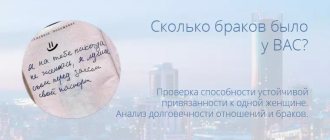Fear, anger, anxiety, panic and worry are accompanied by muscle tension, and if it is removed, you can influence the emotional state, that is, achieve calm.
Fear, anger, anxiety, panic and worry are accompanied by muscle tension, and if it is removed, you can influence the emotional state, that is, achieve calm.
This relationship was discovered by the American scientist and physician Edmund Jacobson in his research in 1922. He studied the expression of emotions in his patients. One of the ways to assess the emotional state was to measure muscle tension tone. As a result, he received confirmation of the connection between emotional and physical stress.
Jacobson has proven that muscle relaxation helps relieve the nervous system from being agitated, helping it to rest and restore balance. Based on this fact, Jacobson developed a simple and effective technique called Progressive Muscle Relaxation.
Thanks to her, he helped his patients get rid of neuromuscular tension, as well as cope with various diseases, such as insomnia, stuttering, and depression. Edmund Jacobson published the results of his work in 1929 in the book “Progressive Relaxation” and continued to improve it until 1948.
The Jacobson method of progressive muscle relaxation has gained wide popularity and is actively used by psychotherapists all over the world.
Who is the Jacobson relaxation technique suitable for?
- People suffering from any anxiety disorders. For example, if you are afraid of flying on an airplane, try using a relaxation technique right at the airport before boarding. It will help relieve a panic attack and you will feel that you can cope with your anxious state.
- People suffering from social phobias. For example, if you are afraid of public speaking, and you have to give a report on your work in front of colleagues, using relaxation techniques immediately before the event can have a good calming effect - and you will appear less stressed in front of the audience.
- To all people to relieve background tension. For example, if you work all day without raising your head, solving complex problems, and in the evening you come home nervous and take out your anger on your loved ones, regular use of relaxation techniques (3-5 times during the working day) will allow you to relieve stress rather than accumulate it .
- To all people to overcome anxiety. Even if you do not suffer from anxiety disorders, if you sometimes experience situations that cause anxiety, feeling nervous is a natural reaction. However, using relaxation techniques will help you calm down at the right time.
Andrey Dirar, psychotherapist:
“Jacobson came up with a wonderful, very good technique. It does not require knowledge of a large amount of information and a deep understanding of the problem. This technique will help relieve tension and remove negative emotions at the moment you experience them. You will have the feeling that you can influence your condition and you are not a hostage to your emotions.”
History of the method
In 1922, the American doctor and scientist Edmund Jacobson (in some sources the surname is translated as Jacobson - this is the same person), conducting research on human emotions, discovered a direct connection between a person’s emotional state and muscle tension. He concluded that muscle relaxation helps relieve nervous tension and restore mental balance. Therefore, he developed a technique called Progressive Muscle Relaxation.
Using a new technique, Jacobson treated his patients for depression, insomnia, and nervous tension. In 1929, he published the book Progressive Relaxation, which described this technique. Until 1984, Jacobson continued to work on it, making it more and more effective.
Benefits of Jacobson Progressive Muscle Relaxation
1. Efficiency. It is a method of self-help designed to reduce emotional stress and bring oneself back to normal.
2. Simplicity. It consists of a set of simple exercises and is easy to digest.
3. Versatility. Does not require ideal environmental conditions and devices for use.
4. Speed. If you practice the technique 3-4 times a day for 3 weeks without stress and panic, just for the sake of training, the body will remember it and will be able to use it automatically if necessary.
Mental relaxation - the effect of relaxation on the psyche and thinking
Few people doubt that our body and our psyche are closely connected. Often in our lives we feel the dependence of one on the other.
Therefore, in addition to the physical relaxation of our body, it is also very important for us (in our “fast” life) to master the relaxation of our psyche, emotions and our mind.
This does not mean that our brain should become useless, but rather calm and peaceful. In essence, mental relaxation is a kind of preparation of our mind so that later we can perform better.
Impact of stress
We all experience stress in life. Stress is our physical or emotional reaction to any changes or problems. When you are stressed or anxious, your body reacts as if it is actually under attack. Your body releases hormones that speed up your heart rate and breathing, and make your muscles tense. And if you are tense, you will feel more pain in your body.
Stress also affects your emotions to make you feel upset or depressed. Over time, stress can affect your health in other ways too. For example, stress can be associated with high blood pressure.
Knowing this, not only physical, but also mental relaxation comes to the fore. When you rest and relax your body and mind, your body stops producing the hormones that stress creates. Lightness returns to your feelings, and you yourself return to a state of peace, both physically and mentally.
Relaxing the body means releasing tension where it is located. You can learn to relax your muscles, for example, through progressive muscle relaxation. Another way to relax your body is to breathe deeply.
Relaxing the mind (mental relaxation) means that you calm your thoughts. Your goal is to feel calm and peaceful. This can help you think more clearly instead of worrying. Relaxing not only your body but also your mind will help you relieve stress, as well as anxiety, depression and sleep problems.
Methods of mental relaxation
You can try and experience one or more of the following tips to see what works best for you.
- Breathe slowly and deeply. Or try other breathing exercises for relaxation.
- Soak in a warm bath.
- Listen to music.
- Sing by yourself.
- Watch your favorite movie.
- Look at the picture.
- Ponder. The purpose of contemplation (or meditation) is to focus your attention on what is happening right now, in the present moment. For example, listen to your body: is your breathing fast, slow, deep or shallow? Do you hear sounds such as movement, or do you only hear silence? You can simply take note of what happens without trying to change it in any way.
- Write. Mental relaxation can be achieved through writing. Some people feel more relaxed after they write about their feelings. You can keep a journal where you share your innermost thoughts.
- Use your imagination (visualize). You can imagine yourself in certain situations that you enjoy, which will help you feel calm and relaxed. Close your eyes and imagine the scene playing out in your head. This scene could be a vacation you enjoyed or your favorite movie. You can imagine yourself holding your baby in your arms. Control your imagination. You can also use audio recordings for this purpose or let a teacher (coach) guide you through the process.
Mental relaxation frees you from conditions. You may easily discover that there is a period of silence between your thoughts that is completely unrelated to the thought process. In fact, this period of silence, unrelated to time, brings a huge amount of relaxation. In any place and situation, you can focus on these intervals, even for a short period, and do it day after day.
This "quiet mind" is not actually involved in thinking: it does not differentiate between thoughts and does not judge them in terms of importance or right/wrong. By practicing this approach day after day, you will see that many psychological problems seem to simply evaporate.
And an even more important fact will be that mental relaxation and this quiet, silent mind will give full scope to creative and intuitive abilities, as a result of which not only psychological problems will disappear, but also intellectual ones, and you will also be able to notice that your practical you have found successful solutions to problems.
What does mental relaxation mean to you? What methods do you use for mental and mental relaxation?
Meditation for deep relaxation of mind and body
Simply put, meditation is the process by which a person enters a trance state.
There are a large number of meditation techniques that provide effective relaxation.
Among them are meditations that are intended solely for relaxation and protection from stress. Using such technologies, you can not only improve your physical health, but also improve your psychological state. The European version of meditation is also called auto-training.
The meditation room must also be carefully prepared:
- wash the room and ventilate it well;
- darken the room as much as possible;
- light incense sticks or use incense with good Indian, Chinese or Japanese oils;
- ask your loved ones not to disturb you.
Let's first get acquainted with the simplest meditation technique, which uses a burning candle. Sequencing:
- Turn off light sources and close windows with thick curtains.
- Sit more comfortably, trying to keep your back straight. It is advisable to take the lotus position.
- Take out the candle. Place it at arm's length, at eye level. Light a candle.
- Concentrate your attention on the tip of the fire. Try not to blink. Allow your eyes to water, this is normal.
- Let the flame gradually fill your consciousness, eliminating unnecessary thoughts. Imagine that your troubles and negative emotions are burned in a fire.
- Close your eyelids and mentally reproduce the image of a flickering light.
- We open our eyelids. We look away from the flame for a few seconds, and then again watch the flow of flame.
- We open our eyes. Let's take a few deep breaths.
Session duration is from 15 minutes.
In the Indian version of meditation practice, sutras are used, special phrases that help relax the body:
- I move through life easily and freely, allowing it to support me, nourish me and heal me;
- I feel calm and strong, like a rock in the sound of the surf.
The most commonly used are mantras - special combinations of sounds in a certain sequence. At the same time, it is a sacred text, a word or a syllable, a type of ancient prayer in Sanskrit.
Every sound has its own vibration frequency. Many mantras begin and end with the sound OM (Aum). The sound OM is believed to correspond to the vibration of the Universe.
mantra Om is simple in composition: OM MANI PADME HUM . But the meaning of its parts is impressive: OM – removes pride and conceit; MA – removes jealousy and envy; NI – removes attachment and selfish desires; PAD – dispels ignorance and confusion; HUM – heart, behavior leading to salvation.
Chanting the Om mantra calms the soul and brings a person’s inner world into harmony with the Universe.
The total number of mantras is in the thousands. Each of them, like a prayer or song addressed to the Gods, has its own goal - the fulfillment of desires.
Let's move on to consider the most popular meditation techniques.
Meditation to relax the body
Sit back and imagine yourself in a forest clearing full of sun and bright flowers. The warm air is filled with aromas. Let's continue:
- Completely relaxed. Carefully inhaling the aromas of the forest, we are filled with feelings of freedom and peace. Quiet. There is only me and nature.
- A dragonfly flies by - a thunderstorm of mosquitoes. I wonder how old the tall anthill at the edge of the clearing is: 50, 100? Its inhabitants scurry along their routes. All passages are open and no rain is expected.
- An ant is running along the sleeve of his shirt. He climbed high. You can’t say anything about him: he went out for a walk. Probably a scout. Let's shake him off to his relatives. Otherwise he will climb up your collar and, pinned down, bite. Everything is fine. A woodpecker knocked nearby and found work. And I'm relaxing.
- Having enjoyed the memories of nature, we return, refreshed. We're home again. Breathe deeply and freely. We stretched ourselves.
We smiled. Ready for work.
Meditation to relax and heal the body
Any emotion finds a response from the body. Stress leads to muscle and tendon tension, changes in heart rhythm, spasms, and metabolic disorders. The proposed technique is aimed at simultaneously relaxing and healing the body:
- First of all, we will try to establish normal breathing. We take deep, rhythmic breaths in and out in a comfortable position with our eyes closed.
- Relax the muscles of the face and neck. Relaxed, they become soft and warm. At the same time, your legs and arms become heavier. The heat is rising.
- Your body has lost feeling in your limbs. Gentle influxes of warmth come to the heart, it beats evenly and calmly. Convince yourself that you have entered a state of absolute peace without thoughts or feelings. You are calm.
- We are gradually emerging from the newfound state: we felt our legs and arms, then our whole body. We open our eyes and slowly rise.
Body Awareness
Feeling your body and every part of the body is a very effective technique that combines rest and relaxation. The sequence of actions in this case:
- Take a comfortable position, trying to keep your back straight. You can lie down if you are going to move from meditation to a state of restful sleep.
- Let's take a deep breath. As you exhale, imagine that all tension is leaving your body.
- Focus on the tips of your toes. Imagine how your breath fills them with warmth and energy.
- We relax our legs, move to our knees, then to our arms, back and face, each time adding a surge of warmth to these parts of the body. We stopped at the top of the head.
- We feel how the warmth covered the whole body, giving it an enveloping relaxation. Maintain this state for another 10 minutes before leaving the meditation.
Breathing techniques
If you are interested in how to get out of stress on your own, start with the use of breathing techniques. Proper breathing in a traumatic situation can even relieve stress or reduce its severity.
Breathing that can calm the mind is diaphragmatic (belly):
- you take a deep breath, and, placing your hand on your stomach, feel how it rises (the stomach inflates);
- exhalation is long, approximately equal to inhalation, the stomach at this time tends to “stick” to the spine.
Don't rush, watch the rhythm and frequency of your breathing, don't let yourself breathe too often, but don't panic when it seems like you're running out of air. Try not to pause between inhalation and exhalation. After a few minutes, do something else that requires concentration.
Conclusion:
In the modern world, those who do not know how to relax, and therefore manage their strength and energy, have a much more difficult and hectic life than those who know how to do this. But speaking in fact, the majority are completely crushed by the social system, and live as it was imposed on them - in a state of constant tension and anxiety.
To be more effective, healthier and more successful, you first need to learn how to relax and rest. Your body is something that is guaranteed to stay with you until the end. And to preserve your mental and physical strength, relaxation is necessary. This must be understood clearly!
To get rid of bad habits and addictions, you should also learn to relax, first of all, without the necessary drugs. Do not indulge in the “flight” of your mind for a “magic pill” (cigarette, bottle of beer, etc.) that will bring peace, but learn to relax without the help of imposed, negative psychoprograms, on your own.
Therefore, I propose to use useful and effective methods and techniques of relaxation : Things without which proper relaxation :
- get enough sleep and rest to the fullest
- use dynamic relaxation: dance, laugh, have fun - change the environment
- play sports to be relaxed; hit the makiwara and trample the bag
- and finally, stop bad habits; eat healthy
Make a choice!
Use direct relaxation techniques :
Aquarium
Meditation
Music
Bathhouse
Relaxation
Why relaxation is necessary
The ultimate goal of relaxation techniques is to achieve peace and tranquility, then no stressful situations can knock you down. The most important thing is to find time for relaxation. To do this, you must be located in a secluded corner, inaccessible to all external influences. TV, telephone and other irritants should not distract you.
When choosing a relaxation technique, you should be guided by personal preferences and expectations. But you need to start by finding a competent mentor who will help you master your chosen technique. After this, you will be able to do all the exercises without outside help.
What exercises and how to do them
Jacobson relaxation will take you only 5 minutes.
If you practice at least 2 times every day, you will learn to quickly cope with feelings of anxiety and learn to reduce nervous tension when a panic attack approaches.
There are different options for exercises on how to relax, as doctors make their own additions to the technique. But in general the scheme is the same. Let's sort it out.
Jacobson called the technique progressive because we start with one muscle group, and after relaxing it, we add the next one in addition. The body is worked out in an ascending manner.
We tense up, then relax. Each time we put in more effort to feel the muscles as intensely as possible.
To study, it is better to retire to a quiet place where you will not be distracted by anything. It is believed that the technique can be used even in a subway car, but you must feel comfortable. If possible, wear soft, loose clothing that does not restrict movement.
Each time, concentrate on the sensations in the parts of the body you are working with. You will feel warmth, tingling, lightness. Listen to yourself.










